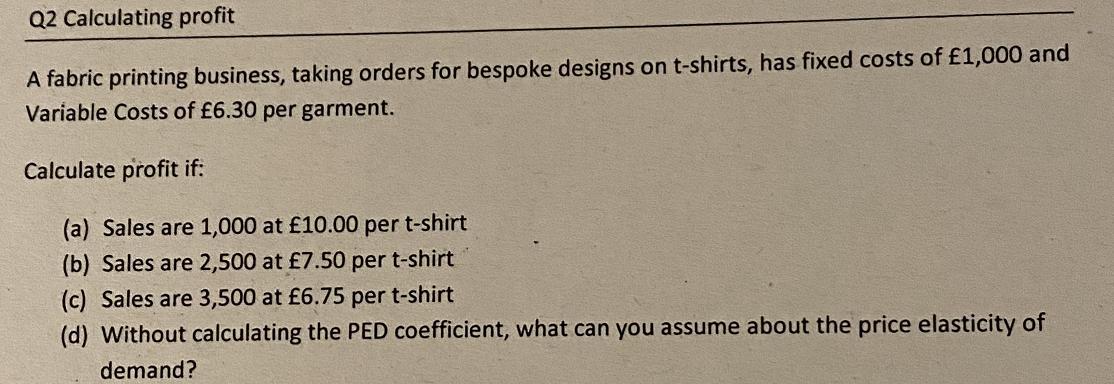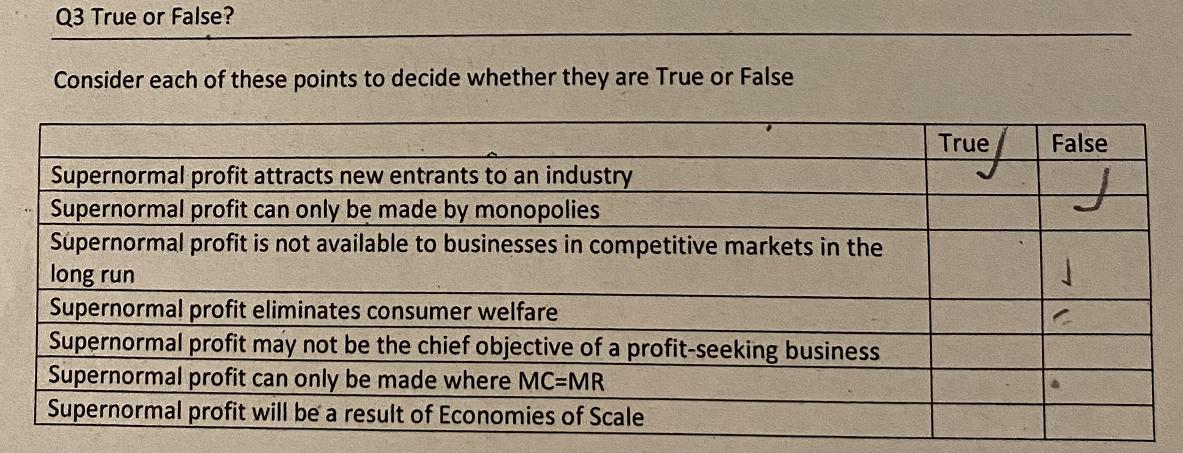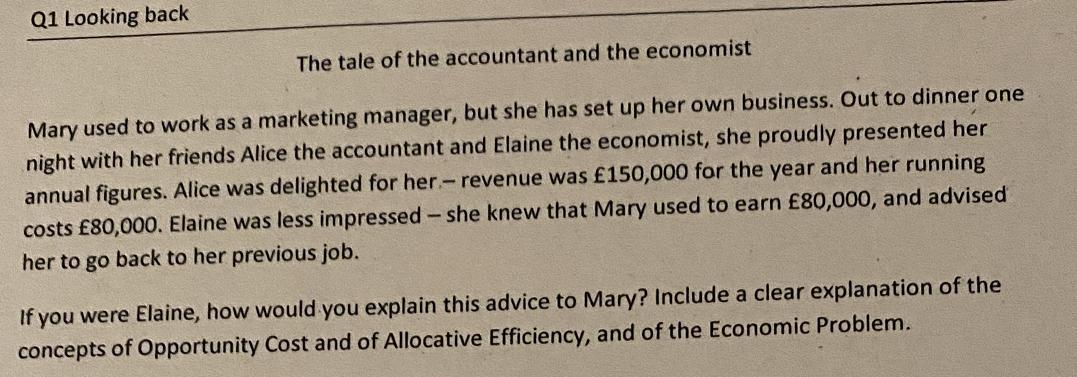Question
Q1 Looking back The tale of the accountant and the economist Mary used to work as a marketing manager, but she has set up



Q1 Looking back The tale of the accountant and the economist Mary used to work as a marketing manager, but she has set up her own business. Out to dinner one night with her friends Alice the accountant and Elaine the economist, she proudly presented her annual figures. Alice was delighted for her.- revenue was 150,000 for the year and her running costs 80,000. Elaine was less impressed - she knew that Mary used to earn 80,000, and advised her to go back to her previous job. If you were Elaine, how would you explain this advice to Mary? Include a clear explanation of the concepts of Opportunity Cost and of Allocative Efficiency, and of the Economic Problem. Q2 Calculating profit A fabric printing business, taking orders for bespoke designs on t-shirts, has fixed costs of 1,000 and Variable Costs of 6.30 per garment. Calculate profit if: (a) Sales are 1,000 at 10.00 per t-shirt (b) Sales are 2,500 at 7.50 per t-shirt (c) Sales are 3,500 at 6.75 per t-shirt (d) Without calculating the PED coefficient, what can you assume about the price elasticity of demand? Q3 True or False? Consider each of these points to decide whether they are True or False Supernormal profit attracts new entrants to an industry Supernormal profit can only be made by monopolies Supernormal profit is not available to businesses in competitive markets in the long run Supernormal profit eliminates consumer welfare Supernormal profit may not be the chief objective of a profit-seeking business Supernormal profit can only be made where MC=MR Supernormal profit will be a result of Economies of Scale True False J so t nal level App corion still e t !. Specification Topic: Profit (short and long run) Q4 Shut down point in the short run Each of these three hairdressing businesses is making a loss. (a) Explain how the concept of 'Short run' applies in this case (b) Explain which of them, if any, should immediately close down and which should continue to operate in the short run. (c) If any of them can continue in the short run, what must they do in order to become a sustainable business? Total revenue Sean's Shears Mullets Fringe Benefits 8,000 12,000 15,000 Total fixed cost (including opportunity costs) 10,000 10,000 10,000 Total variable costs 10,000 12,000 14,000 Total costs 20,000 22,000 24,000 Loss 12,000 10,000 9,000 Q5 Shut down point in the Long Run With reference to the graph below, explain why a business charging P1 can continue to operate in with a smaller market share at Q1, whereas a business charging P2, cannot. Costs P1 P2 Marginal Cost Average Cost Average Revenue Q1 Q2 Output Marginal Revenue
Step by Step Solution
There are 3 Steps involved in it
Step: 1
Q1 The tale of the accountant and the economist Elaine advises Mary to return to her old job due to the economic concept of Opportunity Cost which represents the potential benefits an individual misse...
Get Instant Access to Expert-Tailored Solutions
See step-by-step solutions with expert insights and AI powered tools for academic success
Step: 2

Step: 3

Ace Your Homework with AI
Get the answers you need in no time with our AI-driven, step-by-step assistance
Get Started



